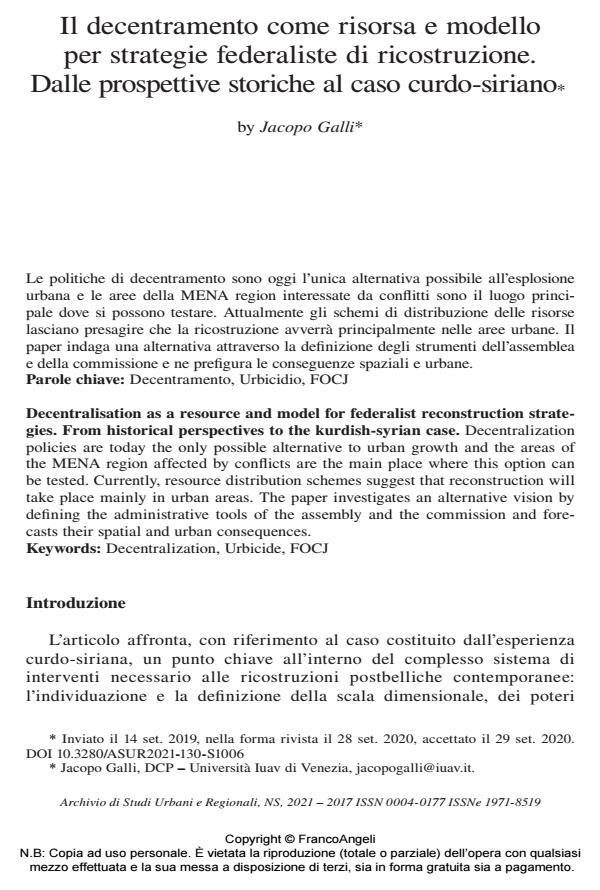Il decentramento come risorsa e modello per strategie federaliste di ricostruzione. Dalle prospettive storiche al caso curdo-siriano
Titolo Rivista ARCHIVIO DI STUDI URBANI E REGIONALI
Autori/Curatori Jacopo Galli
Anno di pubblicazione 2021 Fascicolo 2021/130 Suppl.
Lingua Italiano Numero pagine 23 P. 82-104 Dimensione file 1275 KB
DOI 10.3280/ASUR2021-130-S1006
Il DOI è il codice a barre della proprietà intellettuale: per saperne di più
clicca qui
Qui sotto puoi vedere in anteprima la prima pagina di questo articolo.
Se questo articolo ti interessa, lo puoi acquistare (e scaricare in formato pdf) seguendo le facili indicazioni per acquistare il download credit. Acquista Download Credits per scaricare questo Articolo in formato PDF

FrancoAngeli è membro della Publishers International Linking Association, Inc (PILA)associazione indipendente e non profit per facilitare (attraverso i servizi tecnologici implementati da CrossRef.org) l’accesso degli studiosi ai contenuti digitali nelle pubblicazioni professionali e scientifiche
Le politiche di decentramento sono oggi l’unica alternativa possibile all’esplosione urbana e le aree della MENA region interessate da conflitti sono il luogo principale dove si possono testare. Attualmente gli schemi di distribuzione delle risorse lasciano presagire che la ricostruzione avverra principalmente nelle aree urbane. Il paper indaga una alternativa attraverso la definizione degli strumenti dell’assemblea e della commissione e ne prefigura le conseguenze spaziali e urbane.
Parole chiave:Decentramento, Urbicidio, FOCJ
Jacopo Galli, Il decentramento come risorsa e modello per strategie federaliste di ricostruzione. Dalle prospettive storiche al caso curdo-siriano in "ARCHIVIO DI STUDI URBANI E REGIONALI" 130 Suppl./2021, pp 82-104, DOI: 10.3280/ASUR2021-130-S1006